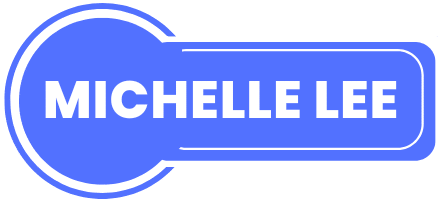So, you finally made something. A design. A blog post. A song. A course. A brand.
Maybe it’s digital, maybe it’s physical—but one thing’s for sure: it’s yours.
But now you’re thinking:
“Wait, how do I actually protect it? What if someone steals my stuff? What even is intellectual property?”
Friend, breathe. You’re not alone. When I first started creating content, I thought “intellectual property” sounded like something lawyers whispered about in courtrooms with mahogany walls. Turns out, it’s just a fancy way of saying:
Your ideas = your assets.
And if you’re a creator, whether full-time or side-hustling, you’ve got to know how to guard your work like a dragon hoards gold. 🐉
This guide breaks down intellectual property (IP) into simple, real-world terms. No scary legal language. Just what you need to know to keep your creations safe—and keep getting paid for them.
WHAT IS INTELLECTUAL PROPERTY (IP), REALLY?
Let’s break it down:
Intellectual Property is anything you create with your mind—then bring into existence.
Words. Images. Music. Products. Brand names. Tech. All of it.
IP is the invisible but valuable stuff that makes your work yours.
THE FOUR MAIN TYPES OF IP (and Which One You Need)
1. Copyright – For Creative Works
What it protects:
- Blog posts
- Artwork
- Music
- Videos
- E-books
- Course content
- Photography
- Code
- Social media content
Why it matters:
The second you create something original and tangible (aka not just in your head), you automatically own the copyright.
That Insta caption you spent an hour writing? Copyrighted.
That original beat you uploaded to SoundCloud? Yep, yours.
Your hand-drawn tattoo flash sheets? Copyrighted.
You don’t need to register it to have rights, but registering with your country’s copyright office gives you stronger legal muscle (like suing power).
Duration:
Usually your life + 70 years (depending on your country).
2. Trademark – For Brand Identity
What it protects:
- Business names
- Logos
- Taglines
- Product names
- Even sounds or colors (in some cases)
Why it matters:
Trademarks protect the vibe of your brand. It makes sure nobody confuses your stuff with someone else’s.
You name your Etsy store “Witchy Threads” and start selling embroidered cloaks. Someone else can’t just pop up with “Witchy Threads” and copy your logo.
Common Myth:
Using the ™ symbol doesn’t mean it’s registered. It just means you’re claiming the mark. For stronger legal rights, register it through your government (in the U.S., that’s the USPTO).
Duration:
Forever—as long as you keep using it and renewing it every 10 years.
3. Patent – For Inventions and Functional Things
What it protects:
- New inventions
- Product designs
- Machines
- Unique processes or formulas
- Tech innovations
Why it matters:
If you invent something totally new—a gadget, an app feature, a formula—patents stop others from copying it.
If you design a new type of coffee press that brews using sound waves, you’d patent the mechanism and protect your invention.
Important Note:
Patents require official registration and can be complex (and pricey). You’ll usually need a patent attorney.
Duration:
15–20 years, depending on type.
4. Trade Secrets – For Secret-Sauce Info
What it protects:
- Recipes
- Processes
- Formulas
- Client lists
- Backend workflows
- Confidential marketing plans
Why it matters:
If your business runs on a “secret sauce,” this is what protects it.
Think: Coca-Cola’s recipe, Google’s search algorithm, or your unique method for building six-figure launch plans.
You don’t register a trade secret. You keep it secret and take steps (like NDAs) to protect it.
Duration:
As long as it stays secret.
WHICH IP PROTECTION DO YOU NEED?
Here’s a quick cheat sheet based on what you create:
| You Create… | You Need… |
|---|---|
| Art, music, writing, photos | Copyright |
| Brand name, logo, slogan | Trademark |
| New product, invention, process | Patent |
| Secret systems or formulas | Trade Secret |
| Courses, digital products | Copyright + Trademark |
| Apparel line with a name/logo | Trademark + Copyright |
COMMON MISTAKES CREATORS MAKE (AND HOW TO AVOID THEM)
“I made it, so it’s safe.”
Not quite. Yes, you own it by default in many cases (copyright), but you don’t get full legal protection unless you register it.
“I found it online, so I can use it.”
Just because something’s on Google or Pinterest doesn’t mean it’s free to use. That’s someone else’s IP. Always ask permission or look for Creative Commons licenses.
“I’m too small for this to matter.”
Wrong. Thieves don’t care about your follower count. And if you grow later, you’ll wish you protected your stuff early.
“I trademarked my logo, so no one can copy my product.”
Nope. Trademarks only cover branding. If you want to protect the product or process itself, that’s a patent.
HOW TO START PROTECTING YOUR STUFF TODAY (EASY STEPS)
1. Document Everything
- Keep dated files of your work.
- Use cloud storage like Google Drive or Dropbox.
- Screenshots of published content help too.
2. Add Copyright Notices
It’s not required—but it does show you mean business.
Format:
© [Year] [Your Name or Business Name]. All rights reserved.
Example:
© 2025 Luna Wilder Designs. All rights reserved.
3. Use NDAs When Collaborating
Got contractors, assistants, or collab partners? Use a non-disclosure agreement (NDA) to keep your secret sauce safe.
4. Register What Matters Most
- Copyright: Register with your country’s copyright office.
- Trademark: Apply through a trademark office like the USPTO (U.S.).
- Patent: Get a patent lawyer involved—don’t DIY it.
5. Watermark or License Your Content
If you’re posting high-value art or images, consider watermarks or licensing agreements for anyone using it commercially.
FREE (OR CHEAP) TOOLS & RESOURCES FOR CREATORS
- Creative Commons Search: Find legal-to-use images & music
- Canva’s Legal Guidelines: For using their content commercially
- USPTO (U.S.): https://www.uspto.gov
- Copyright Office (U.S.): https://copyright.gov
- Trademarkia: Easy trademark search
- NDALegal.com: Free NDA templates
FINAL THOUGHTS: YOUR IDEAS ARE WORTH PROTECTING
If you take nothing else from this guide, take this:
Your creativity has value. And value deserves protection.
You don’t need a lawyer on speed dial. But you do need to understand how to lock your digital doors, so no one walks in and steals your genius.
You worked too hard to build your brand and your art.
So protect it like it’s your home.




